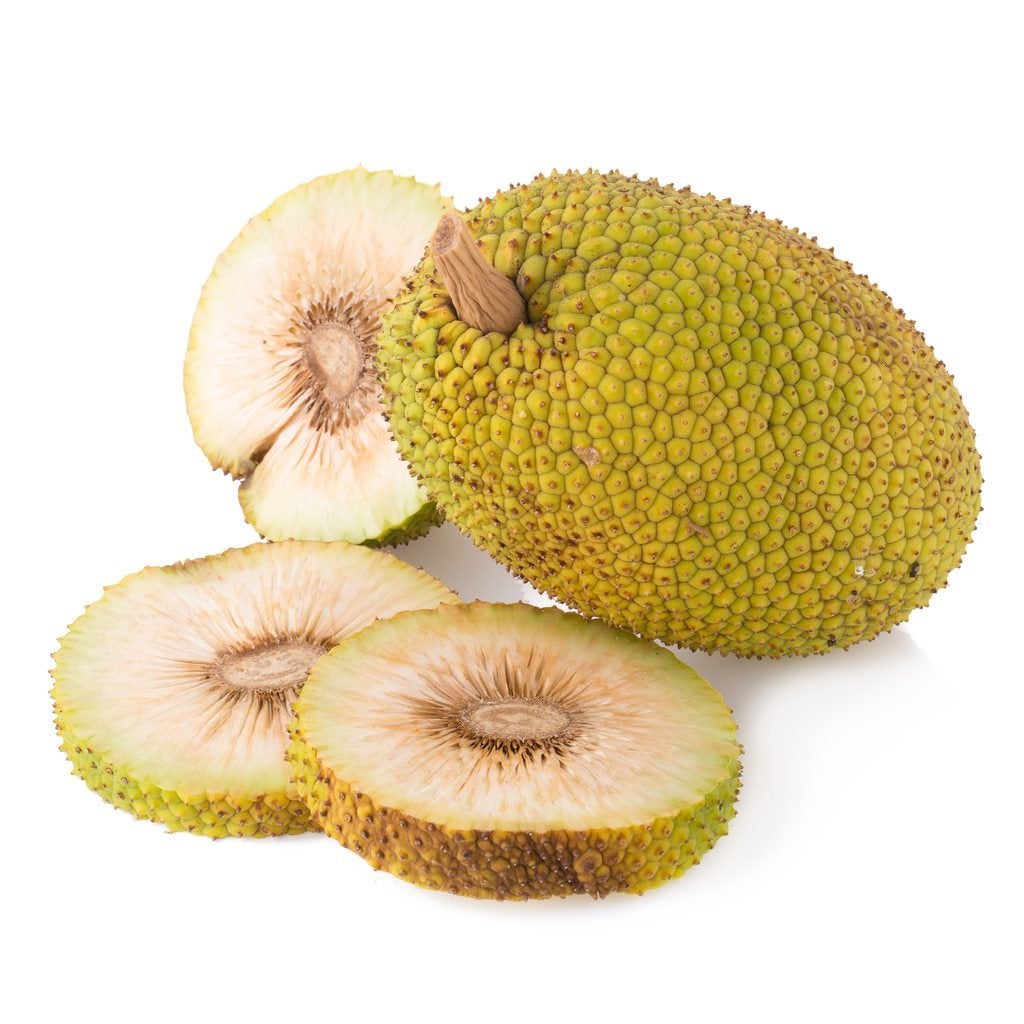
Belonging to the mulberry family, breadfruit (Artocarpus altilis) is a staple amongst peoples of the Pacific Islands and throughout southeast Asia. For these people, breadfruit has a multitude of uses. Cooking with breadfruit is the most common method for using breadfruit, but it is used in various other ways too. Even if you don’t live in these regions, breadfruit can sometimes be obtained at specialty markets in larger metropolitan areas. If you are lucky enough to grow this tree or have access to it and are feeling adventurous, you probably want to know what to do with breadfruit. Read on to find out how to use breadfruit.
About Using Breadfruit
Breadfruit may be culinarily classified as a vegetable when mature but not ripe or as a fruit when ripe. When breadfruit is mature but not yet ripe, it is very starchy and used more like a potato. When ripe, breadfruit is sweeter and used as fruit would be. By some accounts there are almost 200 varieties of breadfruit. Most of these have a purgative effect when eaten raw, so generally speaking, it is cooked in some manner whether steamed, boiled, or roasted, for human consumption.
What to Do with Breadfruit Trees
As mentioned, when eaten, breadfruit is almost exclusively used cooked. Breadfruit has a number of other uses besides that of a food staple. Livestock are commonly fed the leaves. Breadfruit exudes milky white latex that is used in various cultures. The sticky substance has been used to catch birds by early Hawaiians who then plucked the feathers for their ceremonial cloaks. The latex was also boiled down with coconut oil and used to caulk boats or mixed with colored soils and used to paint boats. The yellowish gray wood is lightweight and strong, yet malleable and primarily termite resistant. As such, it is used as a housing material and for furniture. Surfboards and traditional Hawaiian drums are also sometimes constructed using breadfruit wood. Although fiber from the bark is hard to extract, it is very durable, and the Malaysians used it as a clothing material. Filipino people use the fiber to make water buffalo harnesses. The blossoms of the breadfruit are combined with the fiber of the paper mulberry to create loincloths. They were also dried and used as tinder. A pulp of breadfruit has even been used to make paper.
How to Use Breadfruit Medicinally
While cooking breadfruit for food is its most common use, it is also used medicinally. In the Bahamas, it is used to treat asthma and to lower blood pressure. Crushed leaves placed upon the tongue treat thrush. A juice extracted from the leaves is used to treat earaches. Burned leaves are applied to skin infections. Roasted leaves are also used to treat an enlarged spleen. The leaves are not the only parts of the plant to be used medicinally. The blossoms are roasted and rubbed onto the gums to treat toothaches, and the latex has been used to relieve sciatica and skin ailments. It may also be diluted and ingested to treat diarrhea.
How to Use Breadfruit in the Kitchen
If you have ever been to a Hawaiian luau, you may have tried poi, a dish made from taro, but in the early 1900s, Hawaii had a shortage of taro, so the indigenous people took to making their poi from breadfruit. Today, this Ulu poi may still be found, most commonly in the Samoan community. Breadfruit is often featured in Sri Lankan coconut curries, but it is so versatile it can be candied, pickled, mashed, sautéed, roasted, and fried. Before cutting into breadfruit, it is a good idea to oil your hands, knife, and cutting board so the sticky latex doesn’t adhere. Peel the breadfruit and discard the core. Cut the fruit into thin slices and then make some long, thin cuts into your slices. This will help the breadfruit absorb the marinade. Marinate the sliced breadfruit in a combination of white wine vinegar, turmeric, chili powder, salt and pepper, garam masala, and garlic paste. Allow the slices to marinate for 30 minutes or so. Heat oil in a pan and fry the slices for five minutes per side until both sides are crispy and golden brown. Serve hot as a snack or as a side with curry. To make the Ulu poi mentioned above, steam or boil the peeled, prepared fruit until soft then simmer it in coconut milk, onions, and sea salt until desired consistency.
Sign up for the Gardening Know How newsletter today and receive a free copy of our e-book "How to Grow Delicious Tomatoes".

Amy Grant has been gardening for 30 years and writing for 15. A professional chef and caterer, Amy's area of expertise is culinary gardening.
